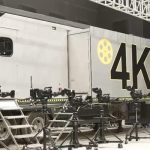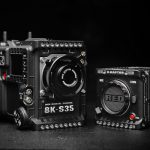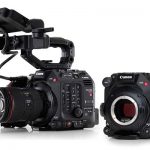Camera Robotics, Camera, Robotics
Broadcast robotics, particularly when linked with production automation, has become widely established in recent years. The technology can cover a broad range of applications, from simple one or two camera studios to complex productions linking studios across long distances.
The technology required for broadcast robotics to work is in place and readily available. Yet some users are concerned that the initial investment will prove hard to recover and the change in operational practices may be disruptive and place some limitations on production values. In fact, many broadcasters who have transitioned to a fully robotic studio have found the reverse to be true: users note a rapid return on investment and are delighted with the flexibility and consistency of the robotic operations.
One of the significant factors that enable broadcasters to achieve a return on their investment is low-station maintenance.
Automating the camera positioning and control releases operators to undertake more creative and fulfilling work without compromising production quality. The level of automation implemented will depend on the nature of the production. Some applications will only require a motor-driven pan and tilt head on a fixed mount, whilst others will have multiple cameras on pedestals moving freely around the studio.
Alternatively, some studios will always be robotically controlled; and in others, there will be programmes that use operators on each camera.
A typical camera robotics installation will inevitably encompass a combination of key requirements. A news broadcaster, for example, might need three or four cameras on robotic moving pedestals to cover a dynamic programme such as a breakfast show, with perhaps another camera on a robotic head fixed in front of the weather set that links to weatherproof robotic cameras for external shots. Likewise, other broadcasters will use multiple studios, linked together on the same programme. This means that robotic cameras in remote locations will need to be operated with the same level of precision from the master studio.
Sky Italia recently installed robotic camera pedestals and heads, together with a control system, for its new studio in Rome – Studio B. Located in a building far away from the main news production centre in Milan, Studio B helps ensure that the 24-hour news service will continue to operate. Should there be a problem in the main production centre, operations can be moved to the new studio quickly and seamlessly, providing resilience to the service and adding capacity.
For coverage of major news events, such as national elections, Studio B can be linked to the robotic camera system of the main newsroom, allowing the two to work as a single virtual studio by one operator.
When considering a camera robotic system and its resulting benefits, therefore, the first decision is to ensure that your supplier can meet your precise requirements. Another such example is a studio’s requirement to be under robotic control for one production, and manual control for the next. Robotic products can give operators the flexibility and control required to execute a range of programmes with a single set of equipment. This ability for a studio to multitask its operations is key in obtaining greater throughput and reducing costs.
Technically, a camera robotics installation is simple. Alongside the existing camera cable, operators simply need to add power for the robotics and an ethernet cable for control. The user interface is also easy to use, with a joystick to control and record movements and a touch screen to recall them. Routine shot selection can be driven from the production automation system, with the operator simply making any trims necessary.
Complex movements can be created and used on-air. For example, a director can create a difficult tracking shot linked in with graphics as part of an opening sequence, confident that it will always be perfectly performed by the robotic pedestals and heads. Similarly, sequences involving virtual reality elements will always be perfectly aligned. The ability to perform on-air moves with absolute precision is one of the creative benefits of camera robotics. Getting complex camera movements right first time, and every time, has a very positive impact on viewing audiences and reduces production costs.
Learning the necessary skills to operate the robotics system in this way is surprisingly fast with operators becoming up-to-speed within a few hours to be able to concentrate on achieving perfect framing on every shot.
KEYE TV, a local television channel in Texas in the United States that had no robotic experience recently opted for robotic solutions.
The director of Broadcast Operations & Engineering at KEYE TV, Dusty Granberry claimed that the lack of robotic experience did not deter its operators.
“The operators picked it up, and in a day and a half of training they were using them.”
Besides the ease of use, KEYE-TV was convinced that the reduction in operation costs was real and the quality of production has been maintained in this environment.
In summary, the point at which the savings in operational expenditure overcome the capital cost of a new system will vary for different broadcasters and depend on the labour costs within their market as well as the complexity of their robotics installation. Despite these variables, in virtually every case, it takes between two and three years to achieve a return on investment, which is well within the expected lifetime of the hardware. Therefore, quite simply, implementing robotic cameras makes good business sense.















































































